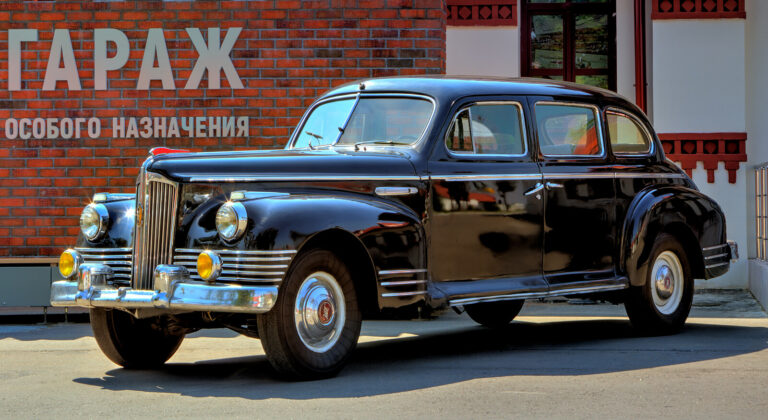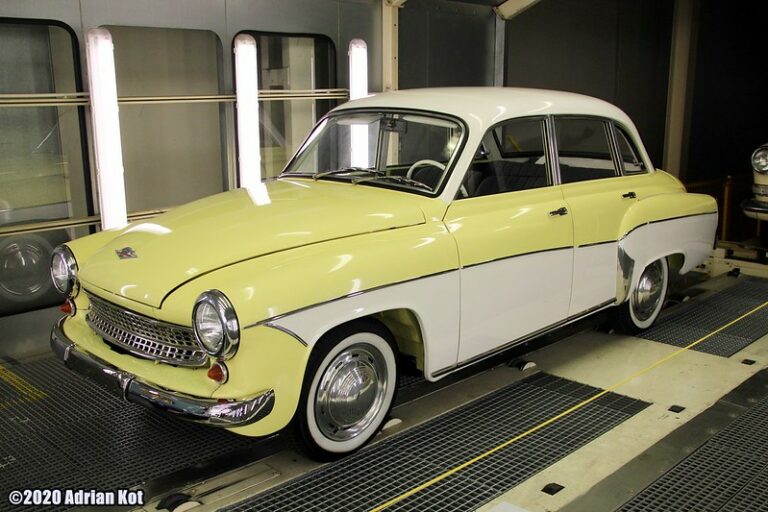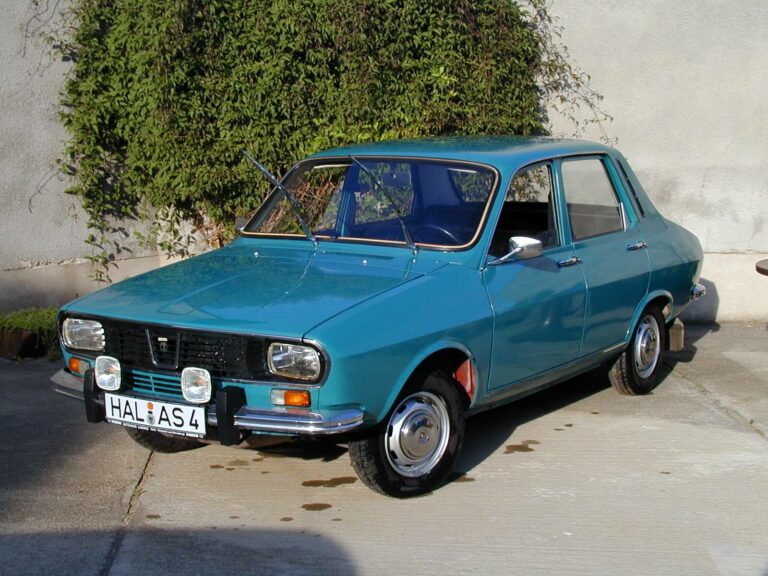1977 - Skoda test
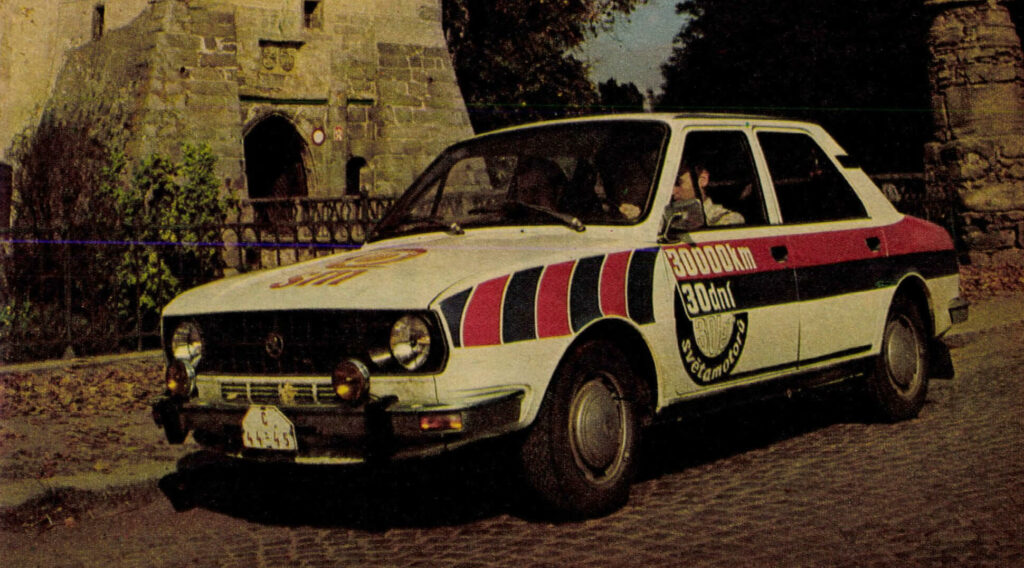
In May 1977, a chronicle of a test drive taken over from Svět Motorů, the Czechoslovak sister company, was published in Autó-Motor. Below you can read about the then new and highly anticipated car: the Škoda 120L. The original writing is by Otakar Gregora, the photos by Otakar Saffek and Ludek Stetka.

30 000 kilometres in 30 days
A Svět Motorů on a test drive for staff
Even before the new Skoda models went into production, a 120 L model was taken for a test drive by the editorial team of our Czechoslovak sister magazine. We published technical data on four new models from the Skoda factory, the 105 S and 105 L, as well as the 120 L and 120 LS, in the 6 December 1976 issue of AM, but we had already covered the eagerly awaited new models before that. Unfortunately, we were not able to join the tempting test drive of the 120 L model mentioned here, but we thank the Prague editorial staff for inviting us to do so. However, we have not given up on the report.
At our request, they sent us a detailed description of their experiences on the road, the measurements taken and some pictures of the car they tested. By way of introduction, one of the explanations for the 30,000 kilometres covered in 30 days, or in other words for this brilliant achievement, is that the magazine Svét Motorú celebrated its 30th anniversary last year.
After all, in thirty days, the factory test car has done as much driving as a car owner would normally do in two to three years. And to find out what the journey was like and how the test car behaved, read the report by mechanical engineer Otakar Gregora.
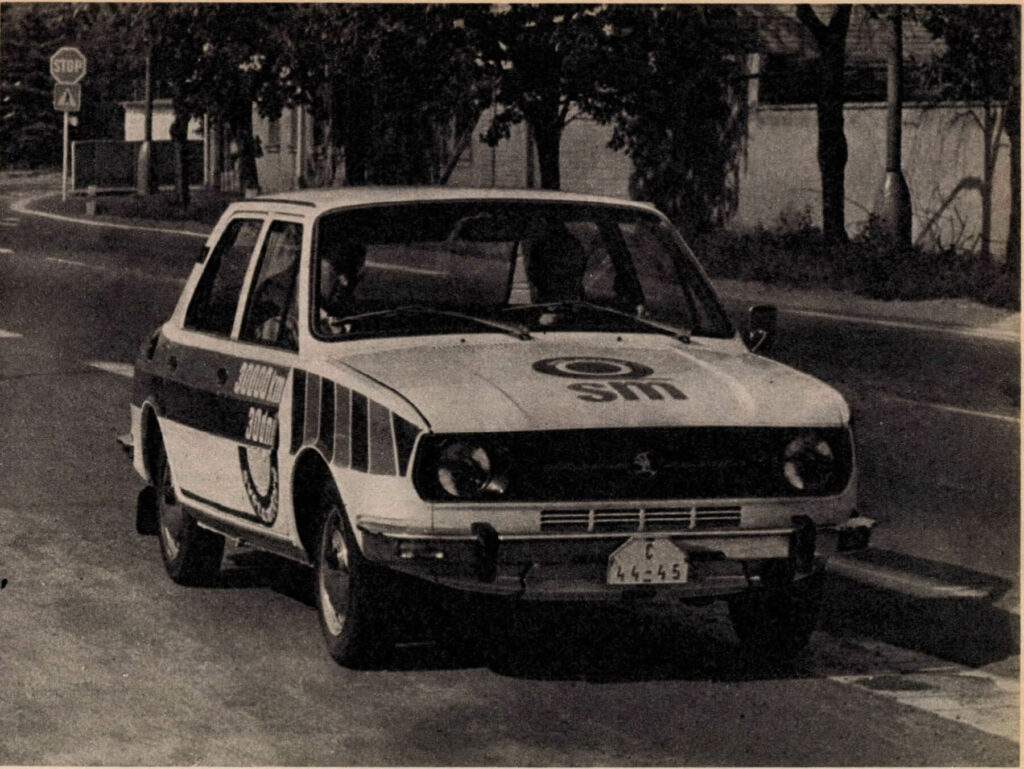
At the start of the test, i.e. the test drive, the counter read 2750 kilometres in the car, which had been previously run in as prescribed. It should also be noted that no structural modifications have been made to our car. However, in view of the conditions of the test drive (almost non-stop driving day and night), we equipped ourselves with two additional spare wheels, a richer tool kit, several sets of spark plugs and more bulbs. Otherwise, we only wanted to use parts whose replacement would not affect or improve the car's original characteristics. However, we could foresee that we would need these items to repair minor faults, especially at night when we could not go to a repairer.
Otherwise, all the maintenance and repair work on our car was carried out by the factory's technical service, and of course we kept detailed records of every operation.
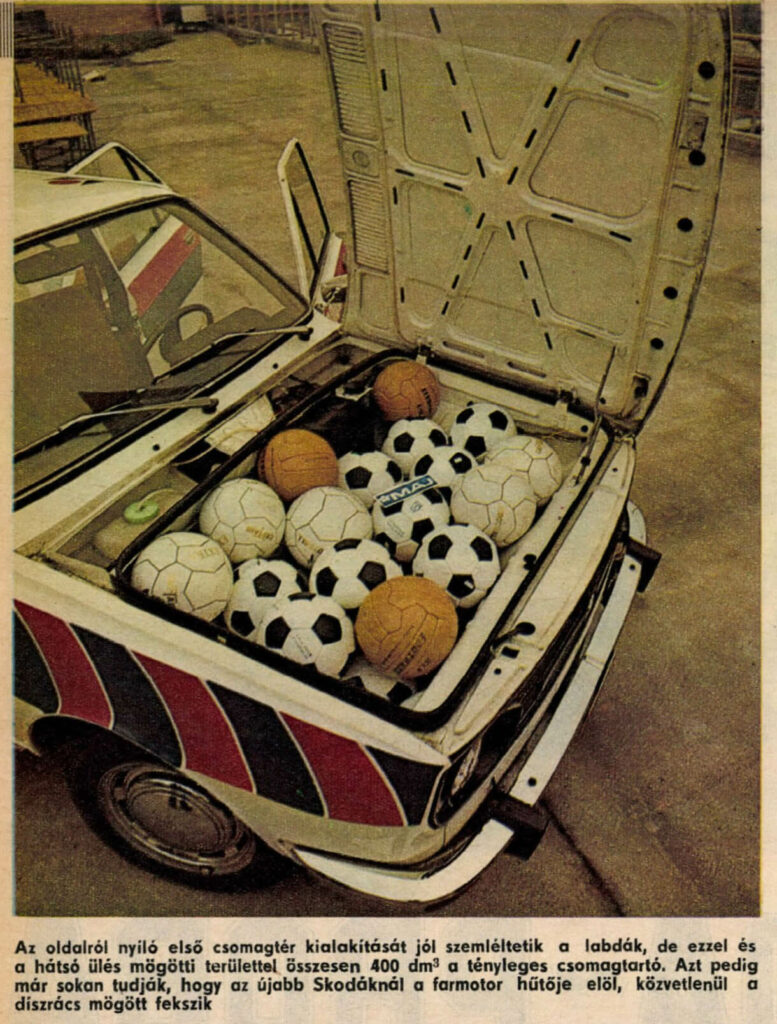
The test Scoda - with engine number 587578/2 and body number 1555189 - was running on three pre-established routes. Two of these (each 500 kilometres long) were on Czech territory, and the third 1000 km long section went through Moravia to western Slovakia. The whole journey was divided into 54 separate sections, from Prague to Prague. All stages started at 6 am, except the 1000 km stage, which took 24 hours to complete.
All test runs were attended only by Svět Motorů editors. There were ten of us who formed a crew of five two-man teams, while three of our colleagues remained in reserve for possible replacements. The members of each team did not rotate regularly, but swapped behind the wheel or in the resting seat by special arrangement, depending on the conditions of the moment. Some of the team members drove 4,960 kilometres of the total distance on their own.
There were no closed stretches, the whole journey was carried out in normal conditions, with traffic light or heavy depending on the time of day. During the nights we drove on relatively quiet roads, but at other times we tried to get ahead of the wildest peaks.
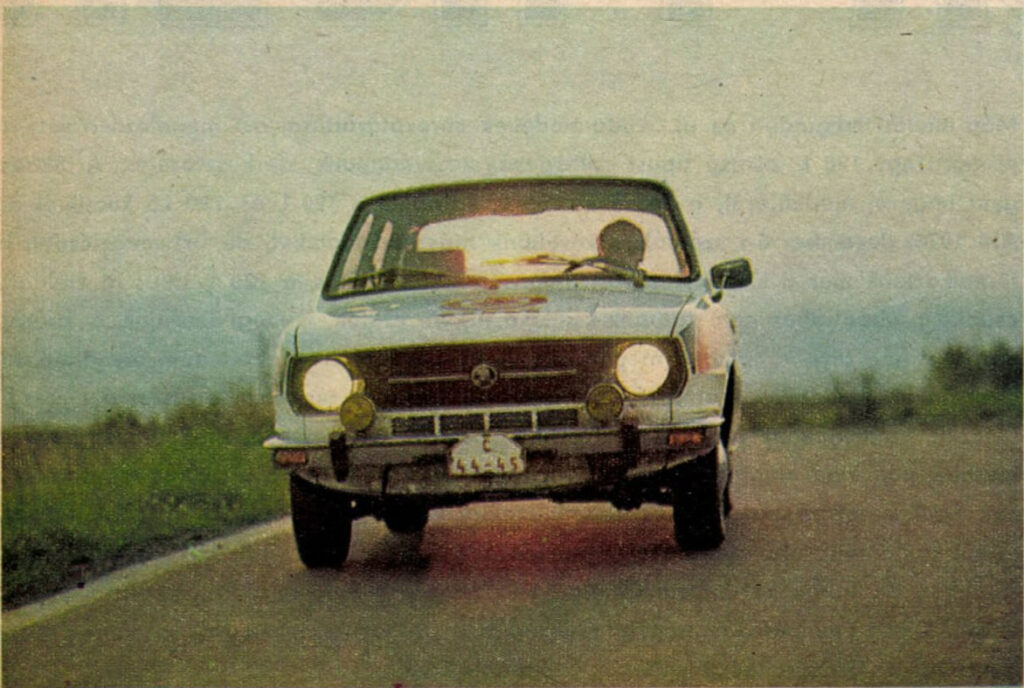
The weather conditions were mostly favourable, with mostly dry roads and no wind. Temperatures ranged from plus 2 to plus 22 °C. Some stretches were foggy and on some lines we had the chance to test the new Skoda in the rain.
Now a few words about the fact that, although our tests were not particularly sporty, the average speeds throughout the whole time were significantly higher than the speeds we would normally drive. After all, the average speed was 61.6 km/h on the slowest sections and 97.0 km/h on the fastest sections. And our average speed for the whole test was 73.57 km/h. In practice, this also meant that the engine was only partially under load, as the maximum speed reached was just over 120 km/h, but we only kept this speed for a short time.
Throughout the test drive, we used 90 octane petrol and standard domestic Mogul Super 20 W -5 0 engine oil and PP 90 gearbox oil.
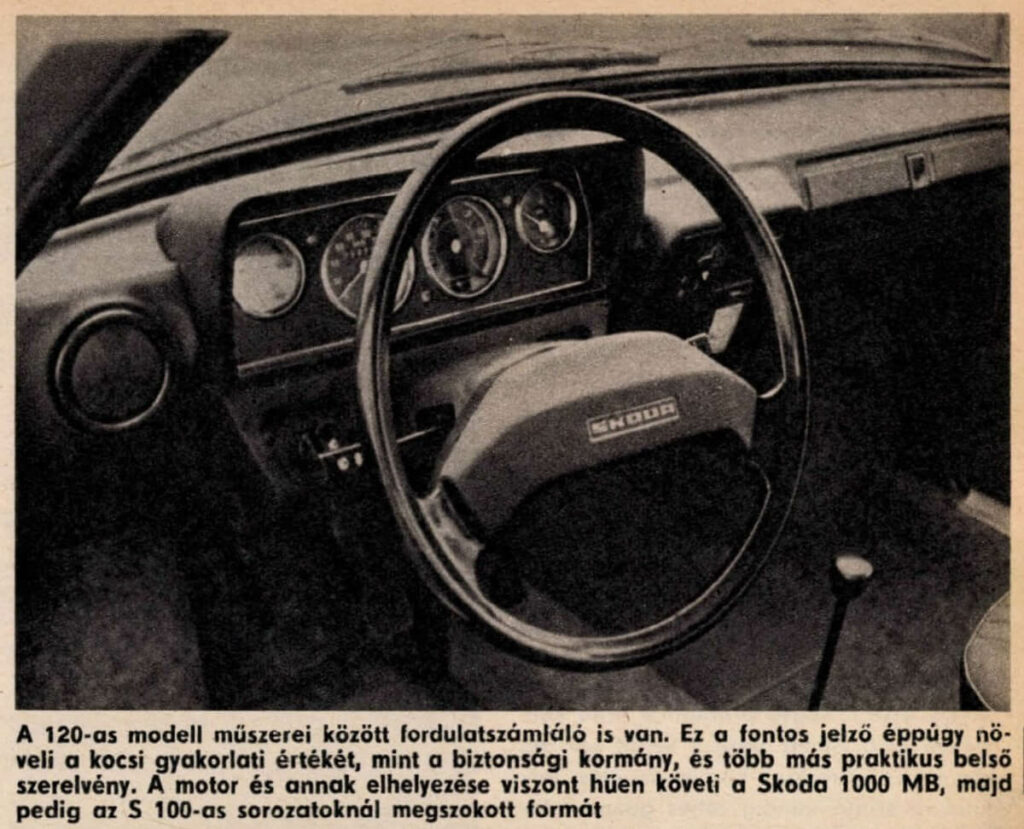
Results of our test
In thirty days we reached our goal of covering 30,000 kilometres. The car made the journey without any major faults. The following should be noted in this context.
- The average speed was significantly higher than the speed normally achieved in a car of this type on normal journeys.
- The average fuel consumption is 0.65 litres more than the factory's standard consumption for this model, but this is in proportion to the speed and operating conditions. The different temperaments and driving styles of the thirteen drivers must also be taken into account in this assessment. To neutralise this influence, other measurements were used to check the actual consumption when the car had covered 17,000 kilometres. Over a distance of around 1,000 km, at an average speed of 74.5 km/h, the consumption per 100 km came to 7.61 litres.
- The oil consumption is barely measurable, so it was very favourable. At the beginning and end of the test, instrument measurements were taken to determine the technical condition of the car. These showed that the 30,000 km had not left any significant traces on the structures. The results of the second acceleration measurement were slightly worse than the initial test, but this was due to the slipping clutch. This was anticipated, but there was no time to correct the otherwise quickly correctable fault.
After the 30,000-kilometre test, we also checked the new car's performance in the top speed field. During this test, only one person, the driver, was in the car at any one time. This final test was carried out on a well-known track near Brno, where we drove almost always at full throttle, except for sharp turns. Our car passed this test without any problems, and the new cooling system also worked well, as the auxiliary fan to prevent overheating did not even come on during this test.
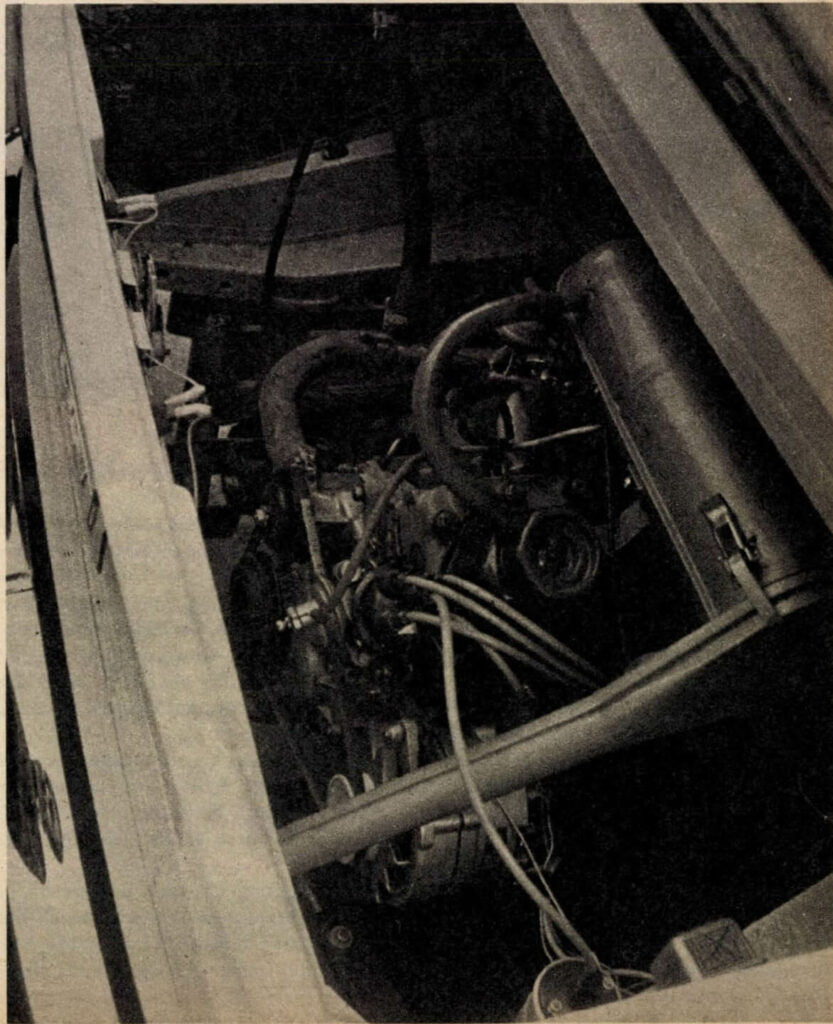
Faults and malfunctions
We have already mentioned that our car was under regular surveillance throughout the journey. Not only did the factory and repair specialists check the technical condition, they also carried out maintenance. They carried out oil changes, valve adjustment, ignition adjustment, geometric checks on the chassis, and eliminated any faults that might have arisen either as a result of the test drive or for design reasons. Logs were kept of everything, as well as of the parts replaced. We wrote down exactly what we noticed, at what mileage, and when what needed to be replaced or repaired.
We also quote from this diary. Let's start with the so-called starter motor, which was replaced after 3867, 10 128, 24 925 and 31 855 km, i.e. four times. It was a design fault, but the production parts are no longer from this series. We replaced the charge regulator (at 24 925 km), two halogen bulbs (after 8009 and 25 099 km) and the alternator bearings (10 128 km). The horn (24 925 km) did not work, its quality was not good and its original location was not advantageous. At 29 025 km the exterior rear-view mirror stopped working quickly due to a weak mounting spring. The petrol filter seal (10 128 km) lost its elasticity and leaked. The front door locks failed (24 925 and 26 980 km), in both cases the plastic pull lever of the internal mechanism broke. The position indicator bulb was replaced at 25 099 km and the number plate bulb at 31 855 km, and the spark plugs were replaced at 14 423 km, as recommended by the factory.
The tyres on the driven rear wheels needed replacing at 24 925 km because they showed heavy wear marks due to previous incorrect geometric alignment.
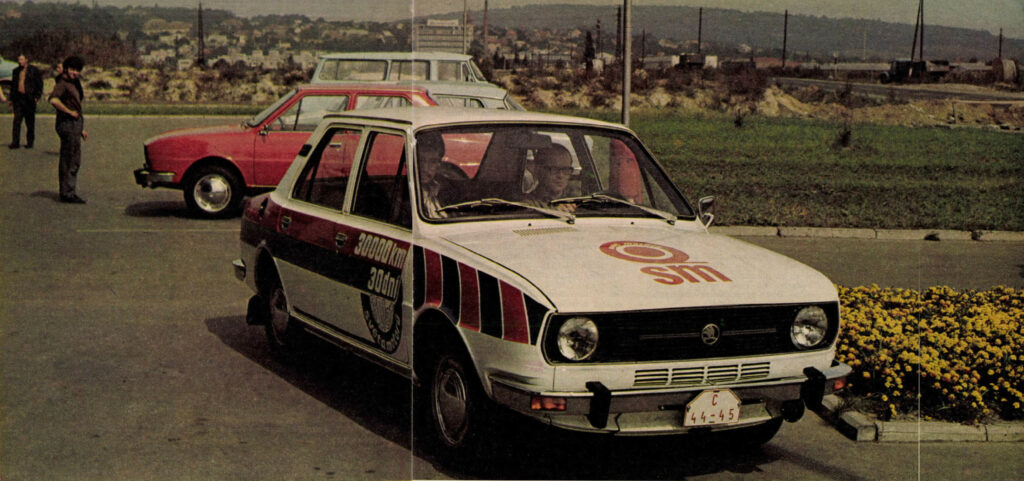
We'll just add to these pictures that from the side, there is little difference between Skoda's new 105 and 120L models. The exterior dimensions are the same for all the basic models. The overall length is 4160 mm, the width 1595 mm and the height 1400 mm. Of course, if the car jumps that much during a test drive, the height from the ground increases considerably. . .
But that was the end of the list of faults and, all in all, apart from the starter engine, which was found to have a design fault, the number of components to be replaced was relatively small in relation to the distance travelled and the stresses. And I would like to stress here that there was not a single failure in the brakes and the drive system, steering, the main elements of active safety, although they were hardly ever maintained.
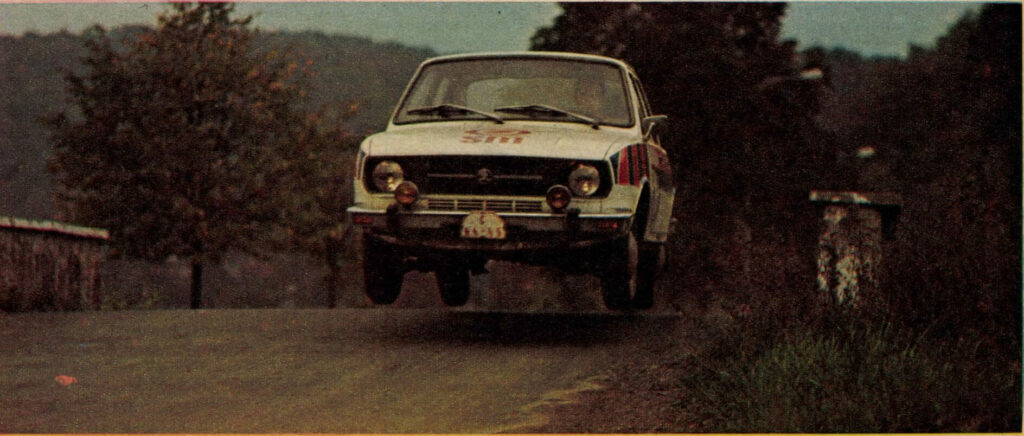
It is not our job in the test drive report to praise the new model, and we merely mention as an objective observation that everything the factory refers to as modernisation has been done well. Both the external and internal modifications are very positive. The efficiency of the ventilation and heating systems has been improved, the boot space is better than in previous models and we also know," concludes Otakar Gregora, "that the factory produces all four models with technology and a level of control that should not disappoint customers of the new models.
Source: Auto-Motor 1977 May
